Wet Chemistry: Alkalinity | Biological Oxygen Demand (BOD) | Conductivity | Dissolved Oxygen (DO) | Fats, Oil and Grease (FOG) | Ion Chromatography | pH
Solids: Total Solids (TS) &Total Volatile Solids (TVS) | Total Suspended Solids (TSS)
Nutrients: Ammonia (NH3/N) | Total Kjeldahl Nitrogen (TKN) and Total Phosphorus (TP)
Bacteria: E. Coli and Fecal Coliform
Field Testing: Whole Effluent Toxicity (WET), Macroinvertebrates
Metals: (info coming soon)
Each year, our expert chemists conduct more than 63,000 lab tests on over 13,000 samples, analyzing everything from incoming wastewater, solids and nutrients to treated effluent water.
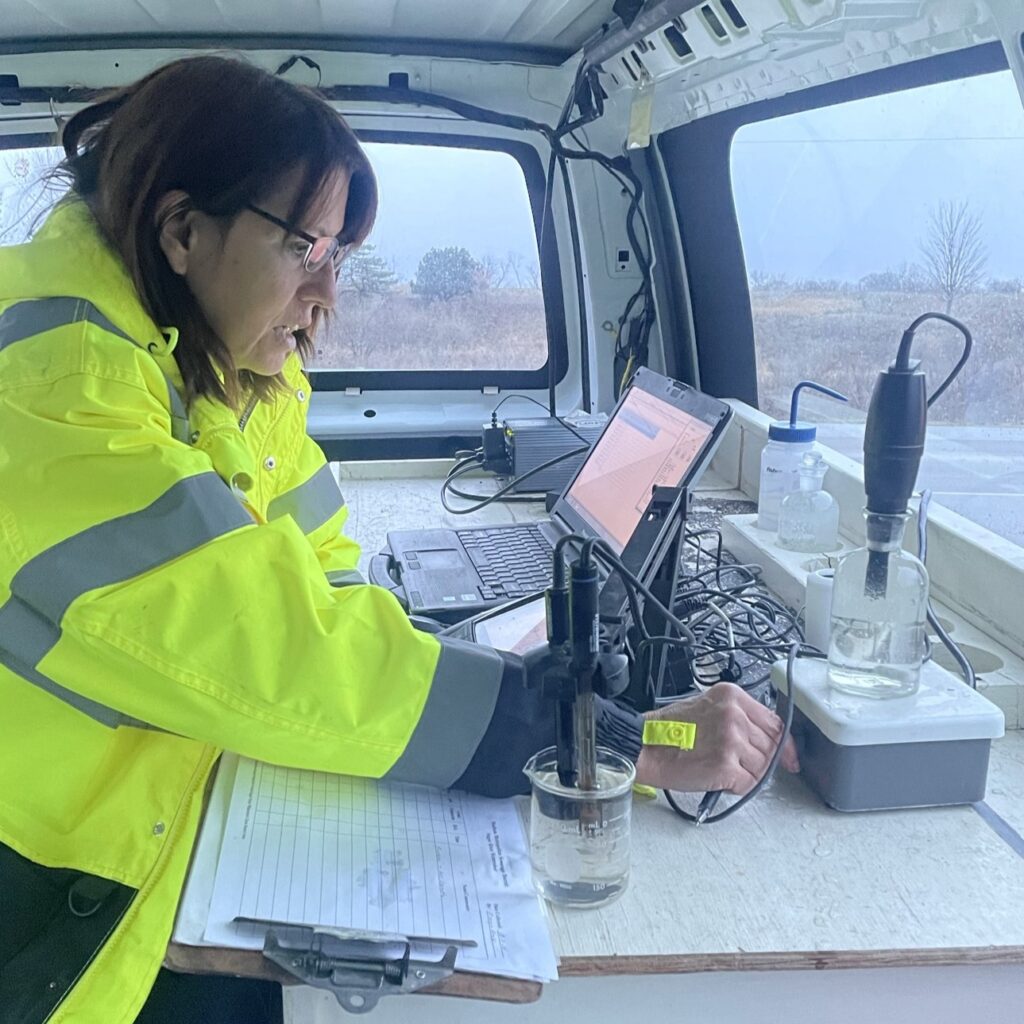
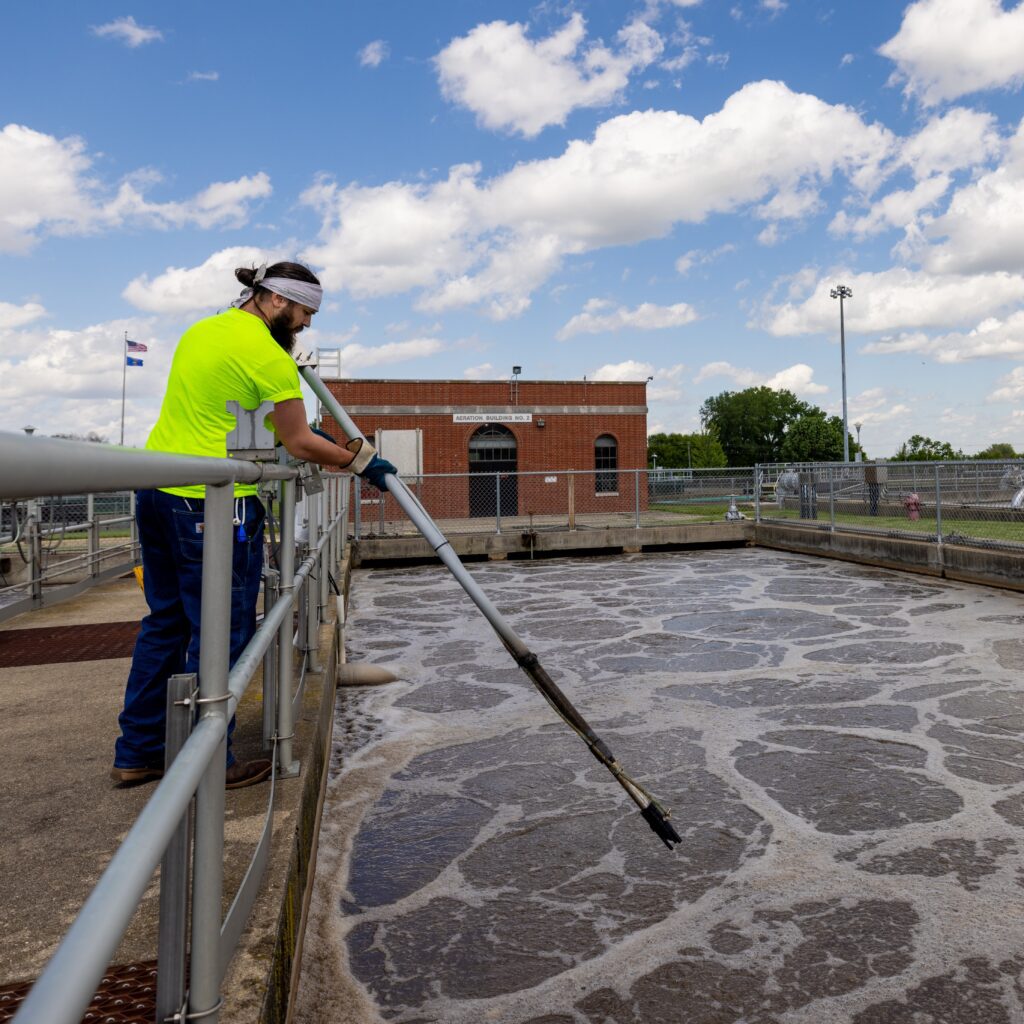
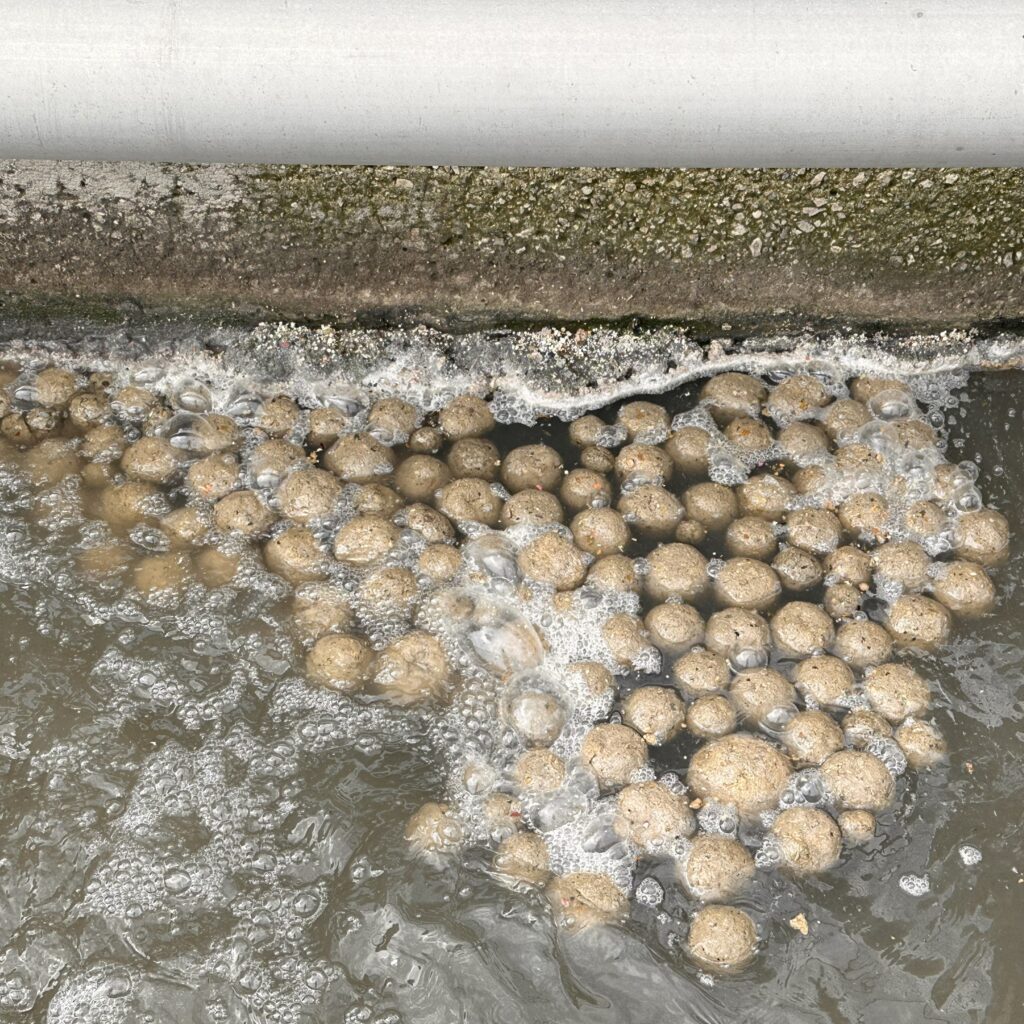
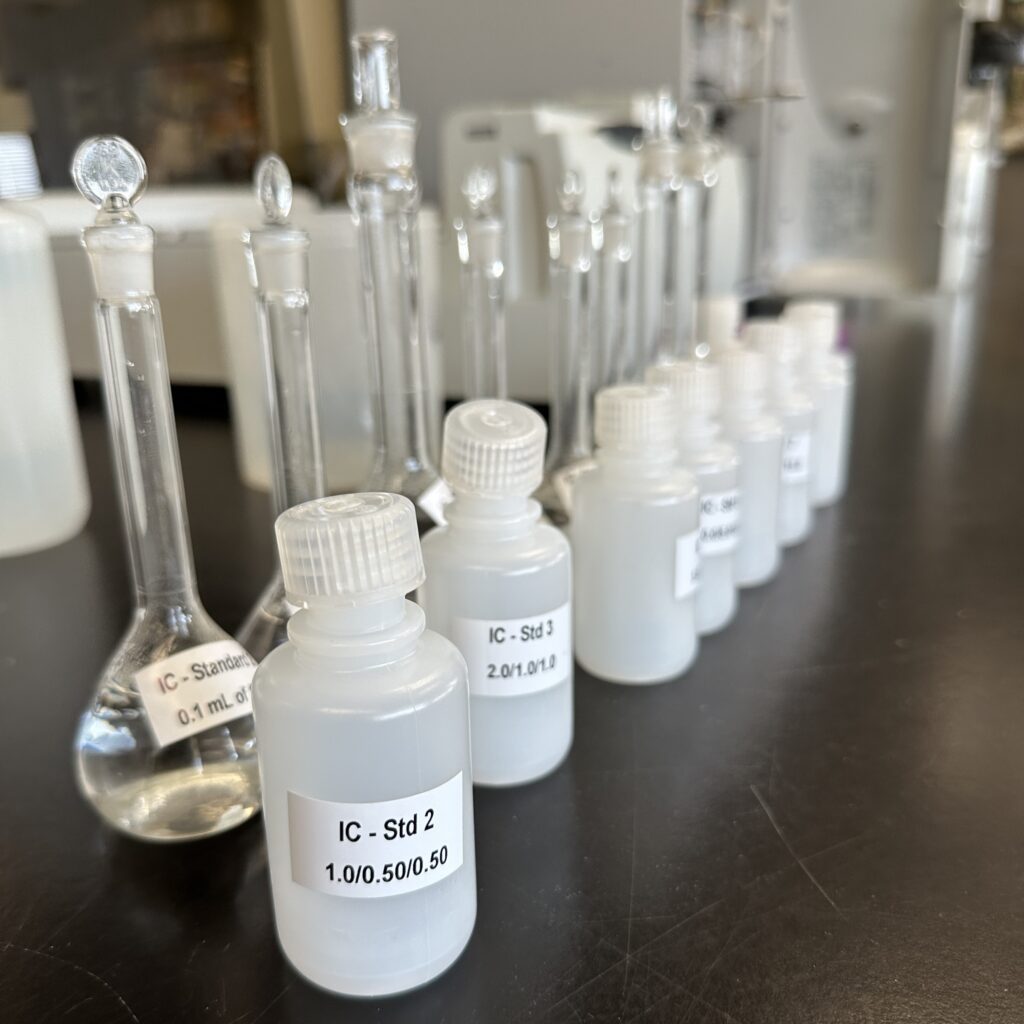
Wet Chemistry
Alkalinity
Measuring bicarbonate and total alkalinity helps us monitor a digester’s “health” and its ability to neutralize acids produced during digestion. It’s a key indicator of digestion progress and stability. It’s also a valuable tool for process control, as it helps prevent digester upsets. Thermophilic conditions (around 55-60°C) foster faster microbial growth and activity compared to mesophilic conditions (around 35-37°C). This increased microbial activity leads to a higher rate of organic carbon breakdown, resulting in a higher alkalinity.
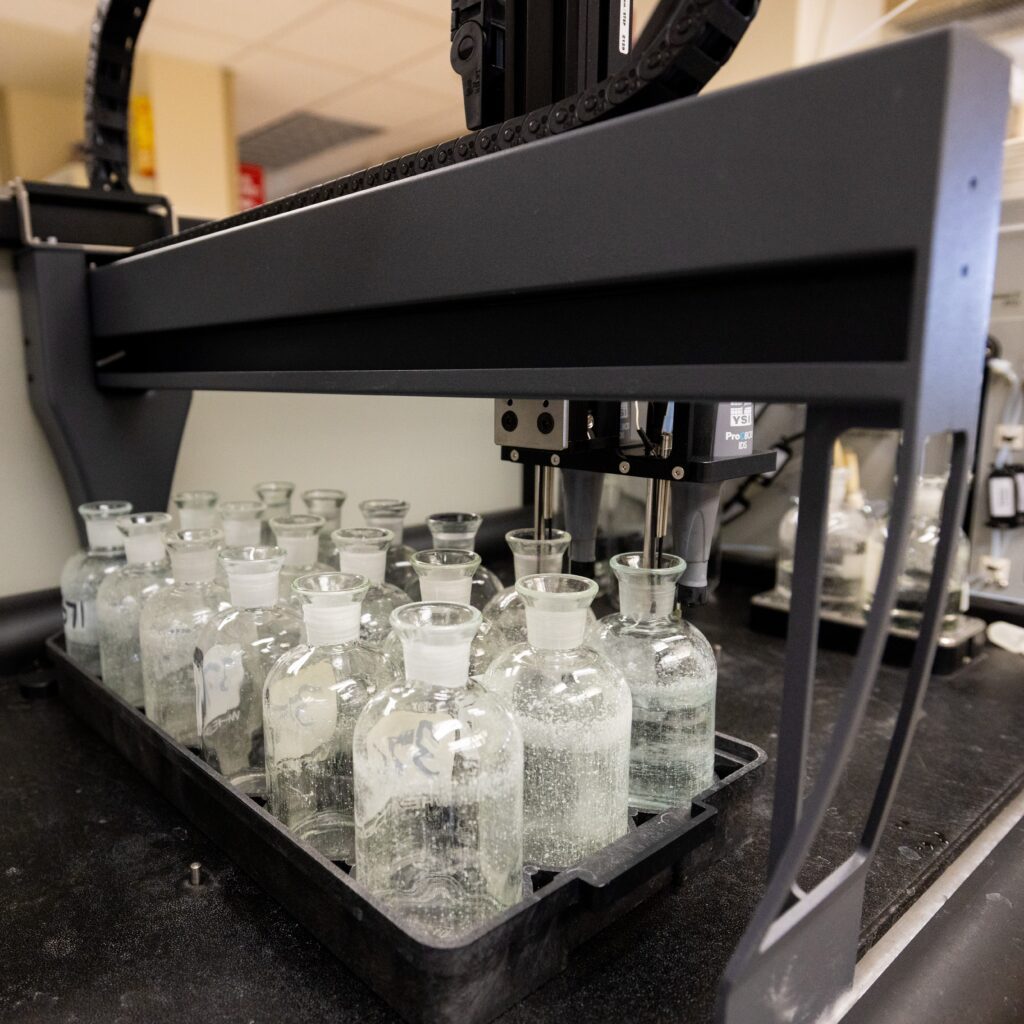
Biological Oxygen Demand (BOD)
Biological Oxygen Demand (BOD) reflects the degree of organic pollution and the effectiveness of wastewater treatment. It indicates the dissolved oxygen required by microorganisms to break down organic matter in water samples.
The lab analyzes BOD in influent wastewater, industrial discharge and effluent (clean water). Industrial waste such as fats, oil and grease (FOG) and proteins can create very high BOD values.
Conductivity
Conductivity reflects the amount of dissolved ions (salts, minerals) in water, providing a general measure of water quality. Conductivity is measured in the field at various points along discharge streams. It is not measured in the lab on influent or treated effluent.
Dissolved Oxygen (DO)
Measuring dissolved oxygen (DO) in aeration tanks ensures optimal conditions for aerobic microorganisms that are key to wastewater treatment. Aerobic bacteria need oxygen to break down organic waste, and understanding DO helps maintain the right balance for efficient treatment and prevent problems like excessive foaming or poor sludge settling.
Fats, Oil and Grease (FOG)
Fats, oils and greases (FOG) create problems in the collection system and wastewater infrastructure. FOG clogs pipes in homes and communities and can cause overflows and sewer collapses. FOG increases BOD load and may impact the performance of microorganisms during secondary treatment.
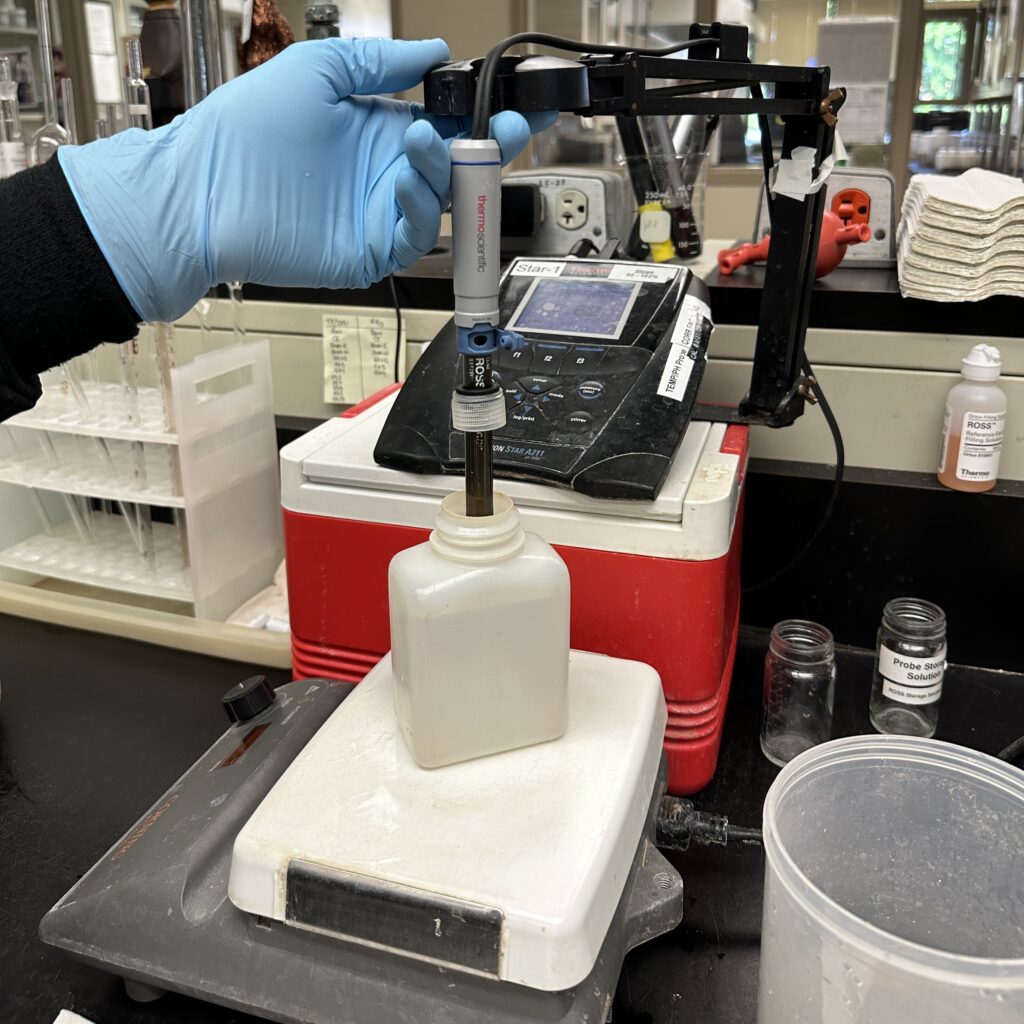
IOn Chromatography (IC)
The lab analyzes effluent and stream samples for chloride (toxic to aquatic life), nitrate nitrogen (creates algal blooms) and sulfate (impacts taste or odor). Chloride and sulfate are not removed during treatment. Ammonia nitrogen is converted to nitrate nitrogen during treatment
Ion chromatography (IC) is used to measure ions in effluent, stream samples and well water. A sample is injected into a column. Ions are separated as they move through the column at different speeds. As the ions are separated and exit the column, they are measured by a conductivity detector.
pH
350pH analysis is a useful tool to monitor the acidity or alkalinity of the wastewater, ensuring it’s within acceptable levels for treatment and discharge. This is crucial for protecting aquatic life, meeting regulatory requirements and optimizing the performance of wastewater treatment processes. We measure pH in wastewater, effluent and sludge. We also use the pH meter to adjust prepared solutions.
Solids
Total Solids (TS) and Total Volatile Solids (TVS)
Total solids (TS) and total volatile solids (TVS) determine the consistency and concentration of dry matter of sludge. TS and TVS percentages are crucial to optimizing digester load, digestion
efficiency and the effectiveness of thickening or dewatering equipment. TS is also used to calculate dry weight concentration of nutrients for proper fertilizer application to agricultural fields.
Total Suspended Solids (TSS)
The lab analyzes total suspended solids (TSS) in influent wastewater, industrial discharge, stream samples and effluent. This test measures the solid particles in wastewater that do not dissolve in water and are suspended in the liquid. These solids can include organic debris like algae and bacteria, as well as inorganic substances like sand, silt, and clay.
Volatile suspended solids (VSS) are a subset of TSS and helps determine the amount of organic waste that is suspended in the sample.
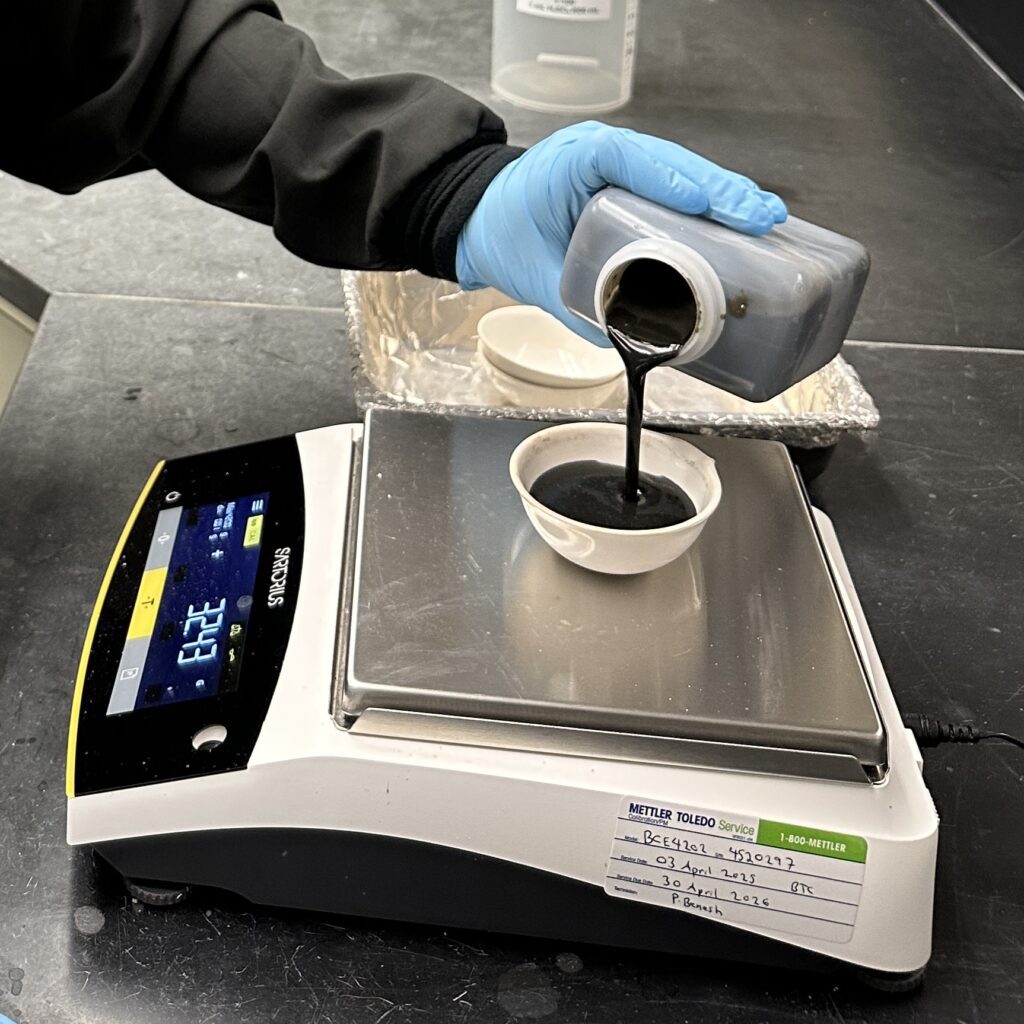
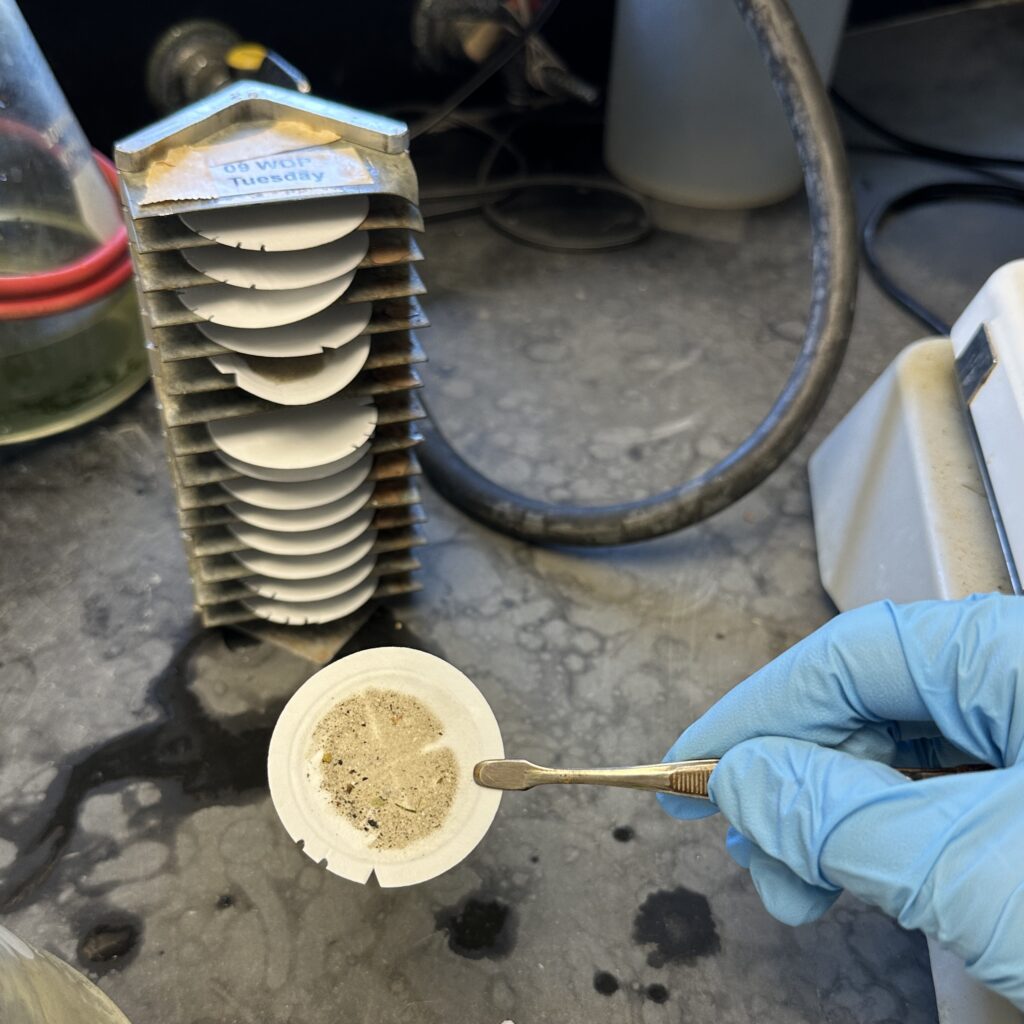
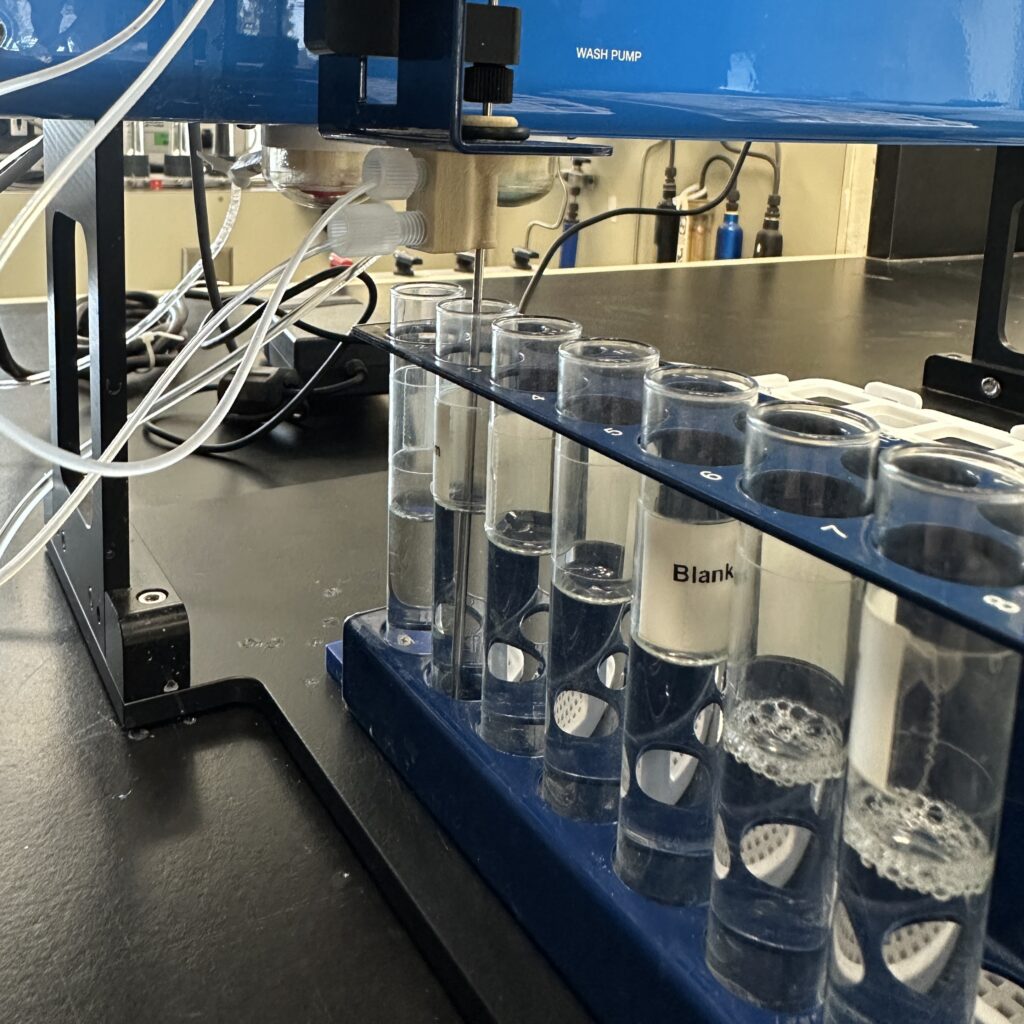
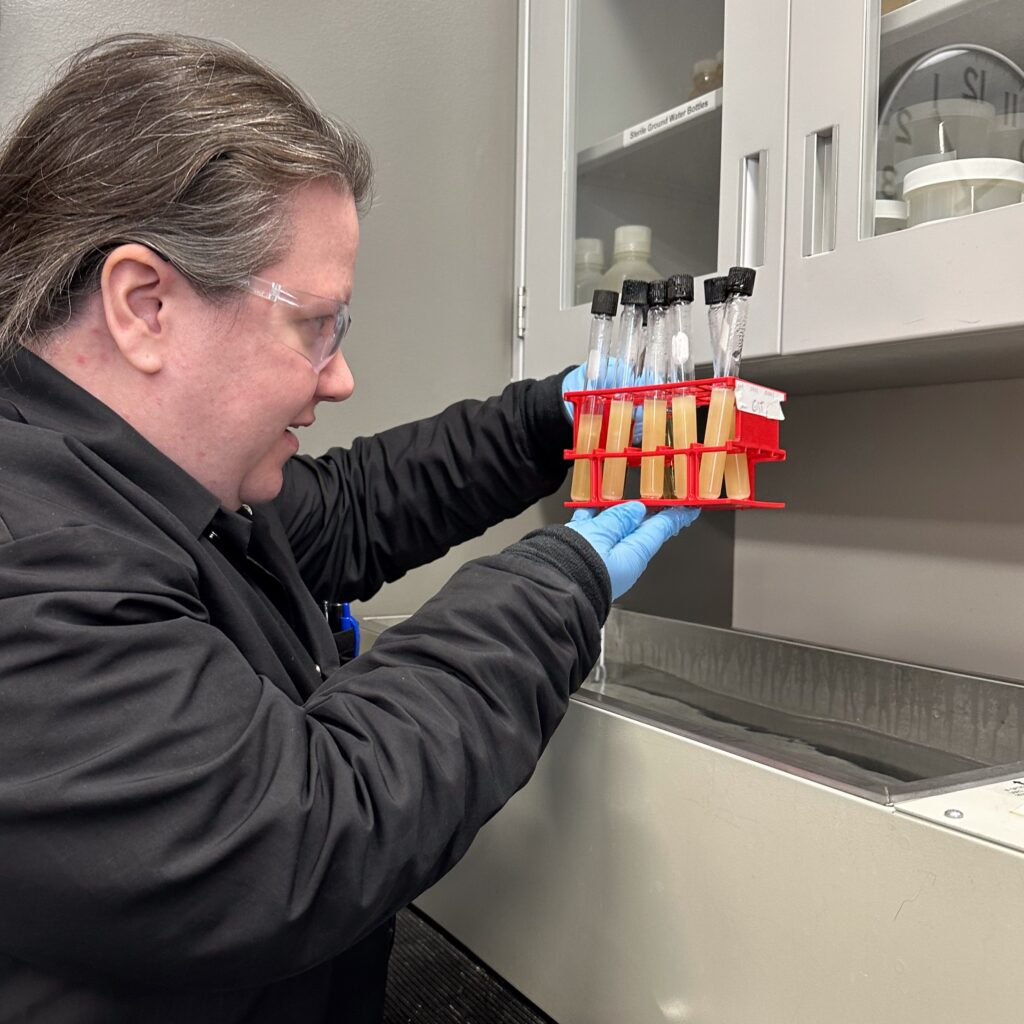
Nutrients
Nitrogen and phosphorus are key nutrients that contribute to eutrophication and other water quality issues. Through our treatment processes, we are able to remove over 95% of the nitrogen and phosphorus that comes into the plant. These tests help us track and confirm our focus on nutrient reduction.
Ammonia (NH3/N)
The lab tests for ammonia (NH3/N) for process control and regulatory purposes. By monitoring ammonia levels, operators can detect any problems or malfunctions in the secondary treatment process (where the ammonia is removed) and make necessary adjustments to maintain the efficiency of the plant.
Total Kjeldahl Nitrogen (TKN) and Total Phosphorus (TP)
Total Kjeldahl Nitrogen (TKN) measures organic nitrogen and total phosphorus (TP) measures phosphorus in influent wastewater, industrial discharge, effluent and stream samples.
Bacteria
E. coli AND Fecal ColiforM
Fecal coliform analysis identifies E. coli as an indicator organism for fecal contamination. Effluent is tested for E. coli during disinfection season to help ensure treated wastewater meets permit limits. Metrogro biosolids also receive fecal coliform analysis.
Field Testing
Macroinvertebrates
Benthic macroinvertebrates, also called BMIs or stream bugs, are key indicators of water quality and the state of the watershed. These small, bottom-dwelling aquatic species, such as insect larvae, snails or crayfish, spend most of their lives in water. They are large enough to be visible without a microscope and are easy to collect and identify. Generally, healthy waterbodies support a wide variety of macroinvertebrates and waters that are less healthy support less diversity.
Whole Effluent Toxicity (WET)
Whole Effluent Toxicity (WET) testing is used to assess the overall toxicity of a wastewater discharge to aquatic life. It’s a biological monitoring method that evaluates the impact of a wastewater sample on organisms, allowing for predictions of potential harm to aquatic ecosystems.
The test organisms used in WET testing include flathead minnow and Ceriodaphnia dubia (water Flea). Our permit requires us to analyze our effluent once per year for Acute WET testing and twice per year for Chronic WET testing.
Acute WET testing is required annually and focuses on how well organisms (like the flathead minnow and Ceriodaphnia dubia, or water flea) survive for a shorter period. Chronic testing is required biannually and focuses on survival, growth and reproduction over a longer period of time.
The auto sampler is also used for user charge sampling.
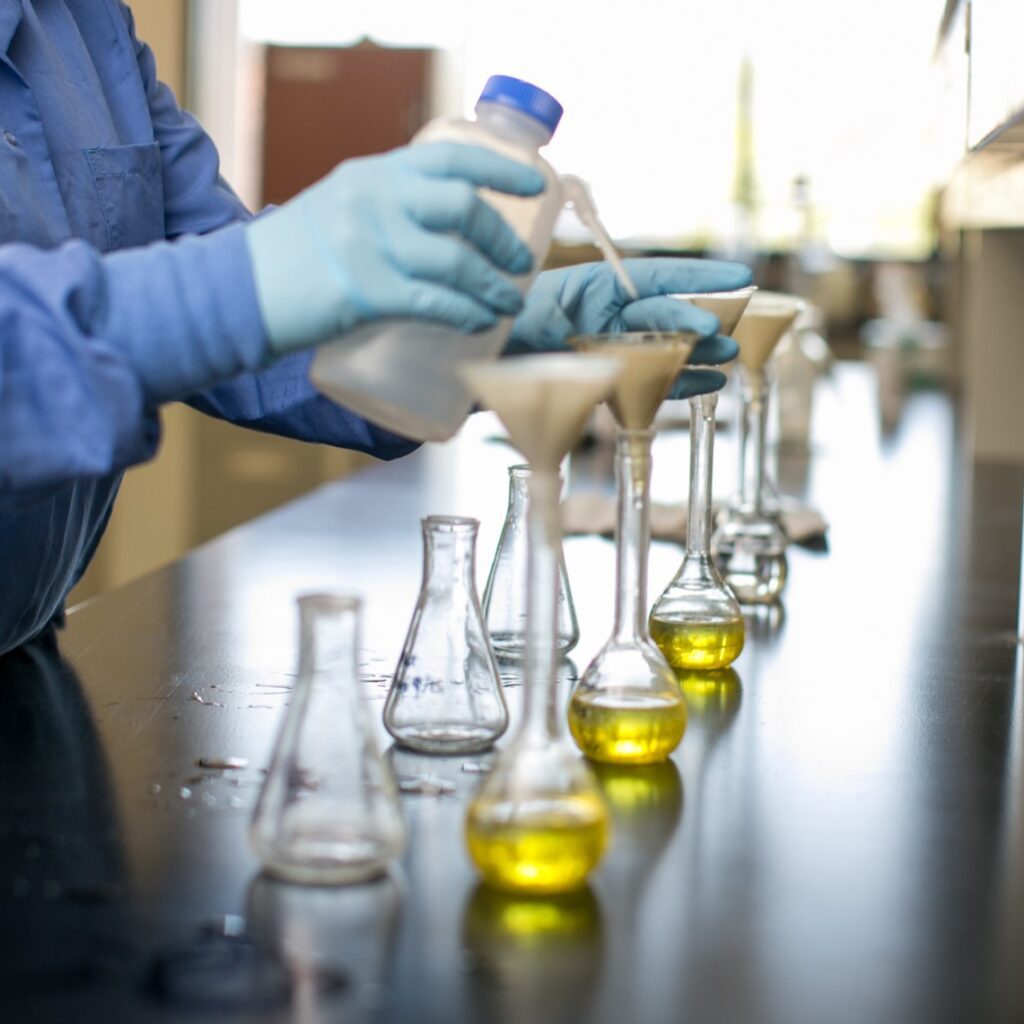
Metals
Coming soon!






